Catherine Diyakonov, Year 2 Research
Abstract
Oxidative stress has a significant impact on the development of neurodegenerative diseases, many of which do not have a cure. Nano-antioxidants are emerging nanomaterials that may slow or prevent the development of these diseases by trapping free radicals. In this study, planaria were exposed to oxidative stress by undergoing a bisection. The planaria were then treated with various concentrations of nano-antioxidants to determine which mixture of C60 fullerene and MitoQ facilitated planarian regeneration. The most effective mixture was determined using statistical analyses. In the future, an in vitro study on stem cells can be conducted to further investigate the effects of nano-antioxidant mixtures on slowing the development of neurodegenerative diseases. Nano-antioxidants have high therapeutic potential due to their emerging potential to combat oxidative stress levels and cure neurodegenerative diseases.
Introduction
Neurodegenerative diseases, which target the central nervous system, are among the top five causes of deaths worldwide (World Health Organization, 2018). One major cause of these diseases are high levels of oxidative stress, a condition which has no concrete cure. Oxidative stress is a state which occurs when there is an abundance of free radicals. When this condition is not controlled, oxidative stress can lead to the generation of increased reactive oxygen species (ROS), potentially adversely altering lipids, proteins, and DNA that are key regulators of cellular signalling (Lobo et al., 2010). Lifestyle choices, such as limiting one’s exposure to toxins and consuming a well-balanced diet, can often reduce and prevent high oxidative stress levels (Poljsak, 2011).
Nano-antioxidants have been shown to quickly and effectively target the mitochondria of cells (Farrugina & Balzan, 2012). During aerobic respiration in mitochondria, ROS arise due to electron leakage from the electron transport chain (ETC) (Farrugina & Balzan, 2012). However, research has not been conducted on the effects of combinations of nano-antioxidants on oxidative stress. In this experiment, the combinations of two nano-antioxidants, C60 fullerene and MitoQ, were tested in various concentrations, using planaria as a model organism. These two nano-antioxidants were specifically chosen due to their structure and possible appealing binding features with the mitochondria, as it is heavily involved in the production of oxidative stress. Furthermore, these two nano-antioxidants have been shown to have positive effects as separate compounds. The compound, C60 fullerene, has been found to accumulate in the mitochondria and provide high radical scavenging, essentially battling induced oxidative stress (Chistyakov et al., 2013). Furthermore, MitoQ has been shown to have a rapid cellular intake due to its high hydrophobicity which tends to reduce the activation energy for passage across the plasma membrane (Apostolova & Victor, 2015).
This project builds on previous research investigating the general effects of nano-antioxidants and their combinations on Saccharomyces cerevisiae. The compound, C60 fullerene, is a nano-antioxidant which has a cage-like fused-ring structure, consisting of hexagonal rings and π-electrons in its double covalent bonds, allowing it to bond with up to six electrons. These properties allow it to penetrate the mitochondria and accumulate in the middle lipid bilayer. Electric field forces are an important mechanism by which C60 fullerene accumulates in the cell, as the outer side of the inner membrane of the mitochondria is positively charged, whereas the inner side is negatively charged (Chistyakov et al., 2013). The second compound, MitoQ, is water-soluble and has a positive charge, through which it binds the inner membrane of mitochondria (Apostolova & Victor, 2015). As mitochondria are involved in the production of ROS, MitoQ can be effective. By binding to the inner membrane of mitochondria, MitoQ can effectively scavenge for free radicals and prevent high levels of oxidative stress.The purpose of this experimentation was to investigate a possible treatment for neurodegenerative diseases. Several concentrations of the MitoQ and C60 fullerene combination solutions were tested in a 1:1 volume ratio: 0.205 mg/mL, 0.215 mg/mL, 0.225 mg/mL, and 0.235mg/mL. It was predicted that a high concentration of the solution may further induce oxidative stress, whereas too weak of a concentration may not be significant (Garidel et al., 2017). Therefore, it was hypothesized that C60 Fullerene and MitoQ in a 0.225 mg/mL concentration would be the most effective nano-antioxidant combination.
Materials and Methods
To prepare the C60 fullerene solution, a dilution formula was used, as shown in sample calculation 1. The compound, MitoQ, a powder, was dissolved and diluted to the appropriate concentrations, as shown in sample calculation 2. The four concentrations of the single nano-antioxidant solutions, C60 fullerene and MitoQ, were 0.205, 0.215, 0.225, and 0.235 mg/mL. The single nano-antioxidant solutions were combined in the appropriate concentrations and equal volumes to create the nano-antioxidant mixtures.
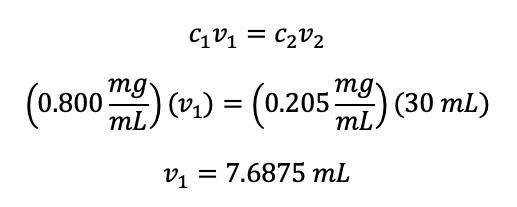
Sample Calculation 1. C60 fullerene in 0.205 mg/mL
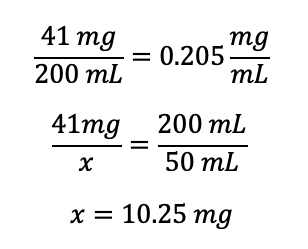
Sample Calculation 2. MitoQ in 0.205 mg/mL
Five petri dishes were prepared and labelled: four experimental groups and one control group. Planaria in distilled water served as the control to compare the regeneration of the invertebrate in the control group and the regeneration of those with the nano-antioxidant solutions. The four other petri dishes were labelled with the appropriate concentration. Each planaria was then cut into two parts with a scalpel, and the initial length of the planaria was recorded. The planaria pieces were placed back into a divided petri dish with 20 mL of the corresponding nano-antioxidant solution (i.e. 10 mL of C60 fullerene and 10 mL of MitoQ in the appropriate concentration). Measurements of each group were taken at the same time every day with the same field of view for 10 days. The average rates of planarian regeneration were calculated by subtracting the final length from the initial length to account for the differences in the initial planarian lengths. After the data was collected, it was statistically analyzed using a one-way ANOVA, as well as a two-sample (unpaired), one-tailed, Welch’s t-test to make comparisons between each of the conditions.
Results
Four mixtures of MitoQ and C60 fullerene combination solution were created in concentrations of 0.205 mg/mL, 0.215 mg/mL, 0.225 mg/mL, and 0.235mg/mL, to test planarian regeneration. The average rates of planaria regeneration are shown in Figure 1. All nano-antioxidant solution concentrations of 0.205 mg/mL, 0.215 mg/mL, 0.225 mg/mL, and 0.235mg/mL had greater planaria length compared to untreated control. Each trial represents an average of five length measurements.
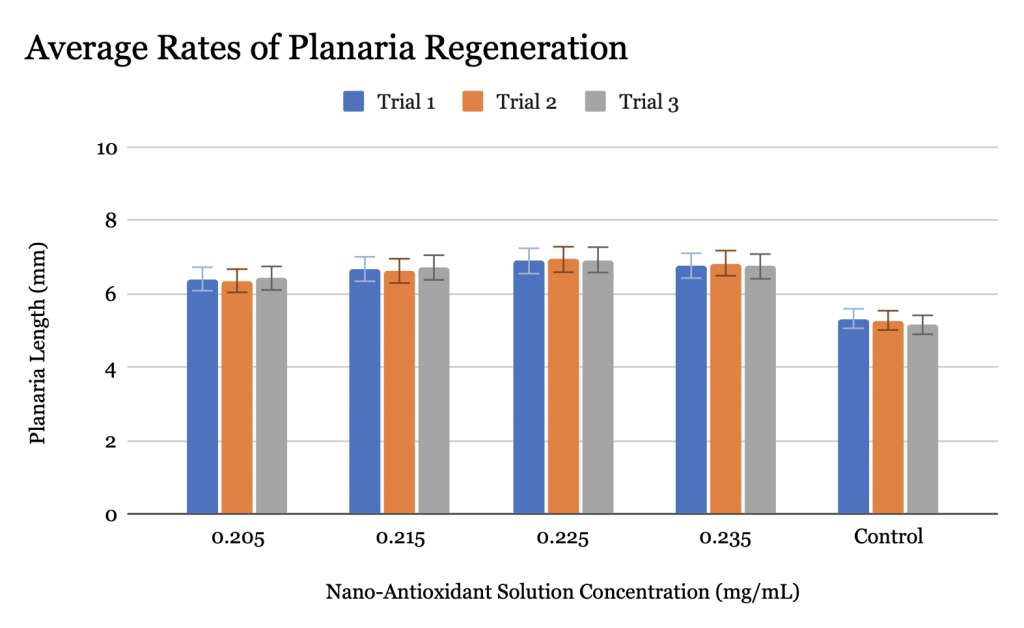
Figure 1: Average Rates of Planaria Regeneration
A one-way ANOVA analysis was conducted to determine the statistical significance of the planarian regeneration with comparison between the control and experimental groups. As demonstrated in Figure 2, all four experimental groups showed significantly higher planaria lengths than the control group, supported by a p value of < 0.0001, suggesting the data was statistically significant. Each experimental group has a significantly larger rate of regeneration than the control group.
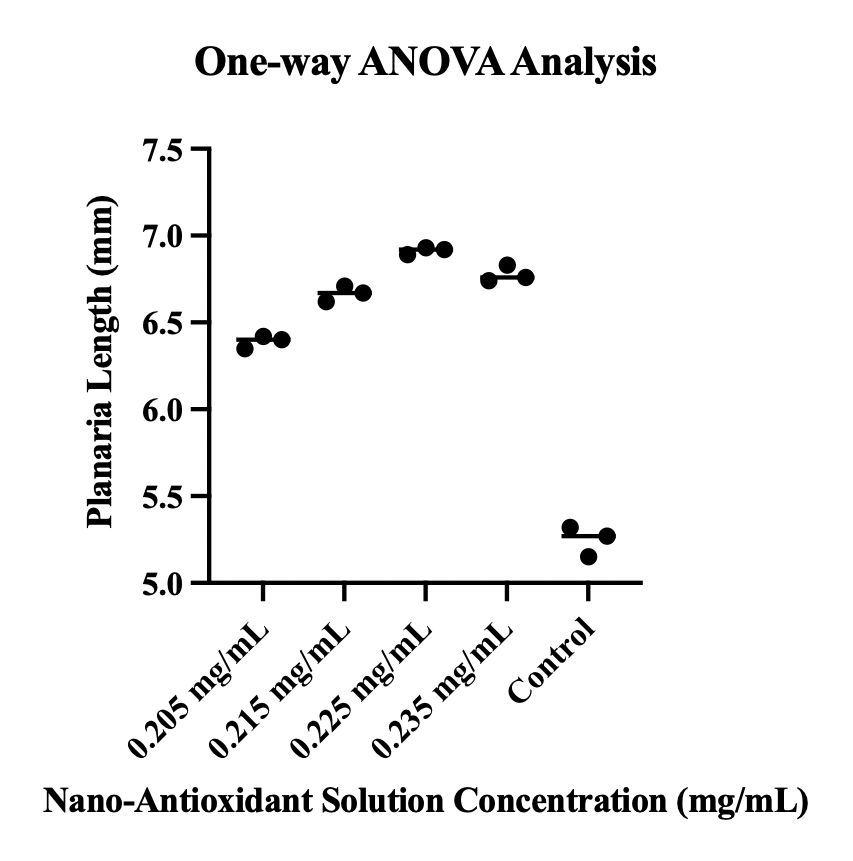
Figure 2: One-way ANOVA Analysis Between Each Solution
Furthermore, Welch’s t-test was conducted between each of the solutions and control group. The 0.235 mg/mL group had a p value of < 0.0001 (Figure 3), suggesting that the results are statistically significant.
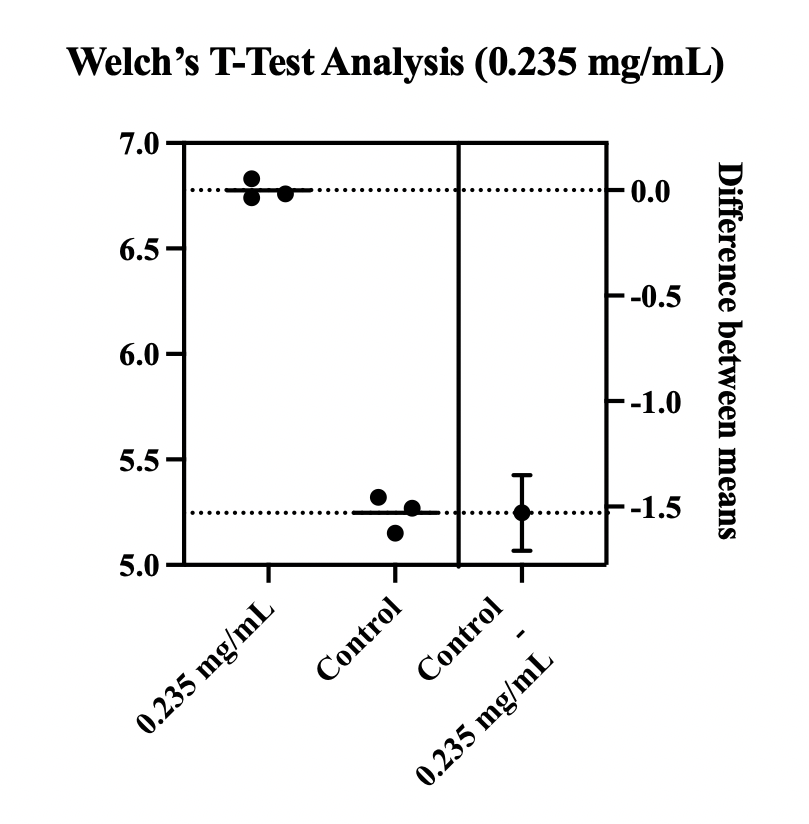
Figure 3: Welch’s T-Test Analysis: 0.235 mg/mL Solution vs Control
Discussion
In this study, planarian regeneration was used as a model to study whether different mixtures of nano-antioxidants can facilitate regeneration. Previous studies focused on one nano-antioxidant, whereas here, two different nano-antioxidants were included in the mixture to explore the effectiveness of a combinatorial approach. It was found that all concentrations of nano-antioxidant mixture facilitated the regeneration process, with the 0.235 mg/mL solution achieving the highest regeneration. Therefore, these findings may suggest that the positive charge of MitoQ combined with C60 fullerene’s lipophilic properties created a solution which penetrated the mitochondria of planaria and targeted leaking electrons from the ETC. However, it is unclear whether these affects are additive or synergistic, requiring further research and analysis. Comparing how the nano-antioxidants perform alone versus in combination against an untreated control in a future experiment would be worthwhile to answer this question.
Future projects can look into testing nano-antioxidants on stem cells. Stem cells are directly involved in the process of regeneration, the mechanism explored within this research (Mahla, 2016). By targeting stem cells with nano-antioxidants, it would be possible to gain a greater understanding of the solutions’ underlying mechanisms. Furthermore, although studies have been done on stem cells with the use of various antioxidants and nanomaterials, studies have not been conducted on stem cells with the use of nano-antioxidants, and more specifically, their combinations. Stem cells would be precisely targeted, rather than an organism as a whole, leaving little room for assumptions in terms of the solutions’ effectiveness (Mahla, 2016). However, it would be important to test the individual nano-antioxidants to ensure the nano-antioxidant combinations are not potentially inducing a greater amount of oxidative stress. In doing so, not only will precise data be collected regarding stem cell regeneration, but a greater amount of solutions will be tested as well.
Although the results of this research are unique, the data collected can be justified with that of previous research done on the single nano-antioxidants. An experimental study conducted by Escribano-Lopez et al. (2016) collected data which concluded that MitoQ prevented oxidative stress and chronic inflammation, specifically providing beneficial effects for preventing cardiovascular diseases in patients with type 2 diabetes. Research done by Prylutskyy et al. (2017) in regard to using C60 fullerene in preventing skeletal muscle fatigue in male Wistar rats gathered data which supported the compound preventing oxidative stress. Specifically, despite increased levels of ROS, C60 fullerene maintained a protective effect on the immune and antioxidant systems of the specimens, likely a similar mechanism which occurred in this research. Findings from these studies are consistent with the results herein relating to MitoQ and C60 fullerene facilitating planarian regeneration. The data support and extend previous research regarding oxidative stress, building upon the previous findings of single nano-antioxidants by investigating nano-antioxidant combinations.
To increase the statistical power of the analyses, this research project could have been conducted on a greater number of planaria. Going forward, it may be possible to narrow down a more precise therapeutic concentration in future experiments. Moreover, future studies should investigate whether the two nano-antioxidants have synergistic or additive effects, as mentioned previously. Various nanotechnology-based products have been approved by the FDA, due to an increase in the use of nanoscale materials in drug development (Patra et al., 2018). Although nano-antioxidant-based medications have not yet been approved by the FDA, it is likely that future research and trials will eventually lead these solutions to develop into medicinal treatments. Nano-antioxidants hold a promising future in therapeutics, with their emerging potential to combat oxidative stress levels and combat neurodegenerative diseases.
References
Apostolova, N., & Victor, V. M. “Molecular Strategies for Targeting Antioxidants toMitochondria: Therapeutic Implications.” Antioxidants & Redox Signalling. vol. 22, no. 8 (2015): pp. 686-729. doi: 10.1089/ars.2014.5952
Chistyakov, V. A., et al. “Possible Mechanisms of Fullerene C60 Antioxidant Action.” BioMed Research International. vol. 2013 (2013): pp. 1-4. doi: 10.1155/2013/821498
Escribano-Lopez, Irene, et al. “The mitochondria-targeted antioxidant MitoQ modulates oxidative stress, inflammation and leukocyte-endothelium interactions in leukocytes isolated from type 2 diabetic patients.” Redox Biology. vol. 10, (2016): pp. 200-205. doi: 10.1016/j.redox.2016.10.017
Farrugia, G., & Balzan, R. “Oxidative Stress and Programmed Cell Death in Yeast.” Frontiers in Oncology. vol. 2, no. 64, (2012): pp. 1-21 doi: 10.3389/fonc.2012.00064
Garidel, Patrick, et al. “High-concentration protein formulations: How high is high?” European Journal of Pharmaceutics and Biopharmaceutics. vol. 119, (2017); pp. 353-360.
Higgins, Paul J. “Stem Cells Applications in Regenerative Medicine and Disease Therapeutics.” International Journal of Cell Biology. vol. 2016, (2016); pp. 1-25. doi: https://doi.org/10.1155/2016/6940283
Lobo, V., et al. “Free radicals, antioxidants and functional foods: Impact on human health.” Pharmacognosy Review. vol. 4, no. 8, (2010): pp. 118-126. doi: 10.4103/0973-7847.70902
Mahla, Ranjeet Singh. “Stem Cells Applications in Regenerative Medicine and Disease Therapeutics.” International Journal of Cell Biology. vol. 2016 (2016): pp. 1-25.
Patra, Jayanta Kumar, & Gitishree Das. “Nano based drug delivery systems: recent Developments and future prospects.” Journal of Nanobiotechnology. vol. 16, no. 71, (2018): pp. 1-33. doi: 10.1186/s12951-018-0392-8
Poljsak, B. “Strategies for Reducing or Preventing the Generation of Oxidative Stress.” (2011, December 10). Oxidative Medicine and Cellular Longevity. vol. 2011, (2011): pp. 1-16. doi: https://doi.org/10.1155/2011/194586
Prylutskyy, Yurij I., et al. “C60 fullerene as promising therapeutic agent for correcting and preventing skeletal muscle fatigue.” Journal of Nanobiotechnology. vol. 15, no. 8, (2017): pp. 1-12. doi: 10.1186/s12951-016-0246-1
“The top 10 causes of death.” World Health Organization, www.who.int/news-room/fact-sheets/detail/the-top-10-causes-of-death. Accessed 16 May 2021.